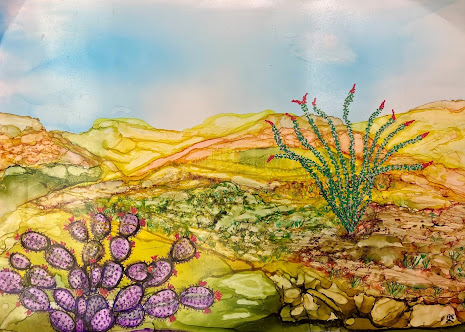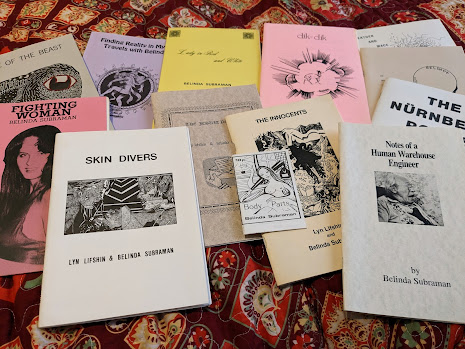GAS: How would you describe your “voice” as a writer?
PW: I write a lot about place and space and how that intersects with identity and experience. Whether I’m exploring form, persona, theme, or atmosphere, real or imagined, I always try to offer the reader a view into a life.
That life may or may not be mine, it may not be the reader’s, but I do hope to lend voice and elevation to some intersection, where the great Leonard Cohen called “the holy places where the races meet”.
PW: When I first began reading poetry in public, a lot of my work was rooted in my experiences emotionally, spiritually, and culturally re-adjusting, following duty as a Peacekeeper in East Africa.
I became categorized as a “Veteran Poet” by many…I still have a difficult time thinking of myself as a “poet” and not cracking a smile or shaking my head, nevertheless being expected to speak FOR or AS ‘the voice of’ any group, or anybody besides myself.
Back then, with Right Wing, Desert War, Ego-Armed, Flag-Fellating, “patriotism” running rampant in the part of the country where I was first reading, I found it challenging to present a more evolved, more healed, and inclusive spectrum of voices (plural), while still sharing my writing in an engaging, relatable, entertaining context.
I hope I have been successful in that, more often than I have failed.
PW: I’ve always tried to bring the work-ethic and opportunism modeled by gigging musicians to my career as a poet and performer.
The first time I ever rode an airplane, off to read words I wrote, to people that wanted to hear them, it set my head spinning!
I’m just a drop-out kid from some tiny oil-patch town in Texas that you’ve never heard of; writers do not come from there.
I’d drive 100 miles or more, one-way, to sign up and read at open mics in cities like San Antonio and Austin. I’d stay ‘til the very end, hanging on every word by every reader…I’d study these poets…then, I’d drive back home, at night, down dimly lit state highways and county roads, once or twice a week.
The carbon footprints I left, crisscrossing, the Eagle Ford oilfields of South Texas wouldn’t earn any kudos from Greta, but all that driving and all that poetry fed my soul and kept my creative fires stoked for years.
Soon, I was being invited to share more of my work as a featured reader, at events once or twice a year.
These days, I enjoy introducing other poets and writers to venues and spaces that have resonated with me, and encouraged my work.
I try to spend about 100 days, every year, out on the road, performing and facilitating workshops; sharing and listening to Indie poets, across the country.
The path of poetry, to me, for me, has always been the path to the horizon…and beyond.
PW: The amazing pay and benefits package! Knowing that I can usually purchase an entire fast-food value meal with my monthly Amazon royalties is an amazing ego-boost!
I’ve always valued the friendships and sustained collaborative experiences, over decades, that get built among those that stick it out, and keep showing up, that keep encouraging new and unsteady voices, that come to be true family.
As writers, and beyond that, as poets, we often stand metaphorically and occasionally, physically, stripped bare in front of our audiences…in front of each other, exploring the very best and the very worst of what humanity is made of; the very best and the very worst in ourselves and each other. That can be an incredibly volatile and rewardingly ego-destroying space to occupy, once you’ve learned to appreciate it, that way.
The friendships that thrive at that level of vulnerability and ‘No Bullshit Tolerated” can end up being their own rewards and encouragement.
Poets do not work in the physical realm anyway; we are, at our best, pushers and peddlers of the Spirit…I believe it’s that realm where the true rewards of poetry are found.
GAS: What is it about modern life that most inspires you to write?
PW: Swimming against the grain, here, but, Social Media.
I enjoy being able to keep up with joys and challenges in the lives of friends all over the world…their local projects and concerns, their shared humanity and responses to events of the day encourage me to keep my beliefs and views flexible and inclusive.
I enjoy being able to see and share work from, for, and with readers and writers at all levels of development and personal truth-discovery.
Any voice that stretches my understanding, either through endorsement or challenge of my lived experience, is silver; those that introduce entirely new thought-worlds, are gold.
I’ve become quite receptive to dialog and conversation-based Social Media interactions for daily inspiration and perspective in my writing projects.
GAS: Tell us about your most recent poetry project:
PW: I’m super-excited that Poetry is Dead: An Inclusive Anthology of Deadhead Poetry, which I edited, and published last year, through my micro-press, Hercules Publishing, has been selected to be presented at the Southwest Popular/American Culture Association’s (SWPACA) 44th annual conference, next month!
It was so much fun, sharing this collection of poems, submitted by folks from around the planet, in the stands and on the parking lots at Dead & Company shows, this past Summer Tour, and it’s going to be a blast sharing the enthusiasm and community that this project sprang from, right back with the scene that birthed it!
We’ll be back out at shows, in Boulder and San Francisco, with this collection, come summer, but not before Professor Andy “Sunfrog” Smith of Tennessee Tech University (who wrote the collection’s foreword) and Central New Mexico Community College educator and KUNM NPR personality Don McIver join me to present this anthology for SWPACA, in support of their mission to promote an innovative and nontraditional academic movement in the humanities and social sciences celebrating America’s cultural heritages.
Whether poetry is being written and shared to support the healing of trauma survivors, to elevate and amplify marginalized voices across identities and cultures, to express awe and connection between lovers, to challenge systems and the status quo, or to acknowledge the spirit of community that develops among fans and followers of a psychedelic rock and roll band, poetry is the glue that holds community together.
It is language elevated with meaning and artistry. When we choose to share it, we join a chorus that began before time itself, and will echo for as long as words are read.
Please visit my website at PWCovington.com















.jpeg)